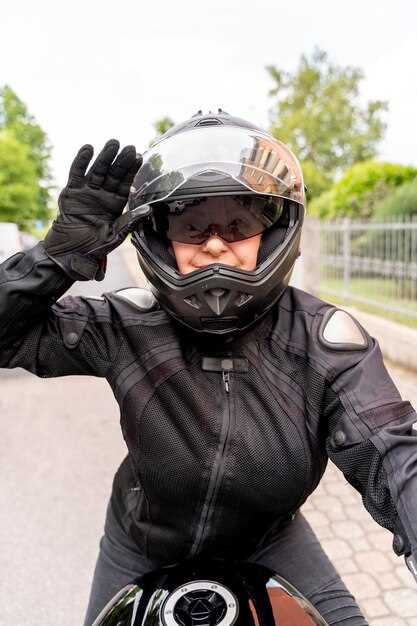
Motorcycle racing is an exhilarating sport that combines speed, skill, and precision. However, the thrill of hitting the track comes with inherent risks. Ensuring your safety is paramount for both enjoying the ride and achieving success. Every racer, whether a novice or a seasoned pro, must embrace safety as a core principle throughout their racing journey.
Understanding the various aspects of safety can be the difference between a triumphant race and a dangerous accident. From wearing the appropriate gear to implementing safe riding techniques, every decision counts. By prioritizing safety, you not only protect yourself but also contribute to a safer racing environment for all participants.
In this article, we will explore essential safety tips that can help enhance your performance on the track. Whether it involves routine maintenance checks, assessing your bike’s performance, or mastering cornering techniques, adhering to these guidelines allows you to race with confidence and enjoy the thrill of the competition without compromising your well-being.
Understanding Protective Gear Requirements
In motorcycle racing, safety is paramount, and understanding the requirements for protective gear is essential for both novice and experienced riders. Proper protective gear significantly reduces the risk of injury in case of an accident, and knowing what to wear can greatly affect a racer’s performance and confidence on the track.
First and foremost, a high-quality helmet is non-negotiable. It should meet safety standards set by organizations like DOT or ECE. A full-face helmet provides the best protection for the head and face, ensuring that a racer is shielded from impact and debris while maintaining excellent visibility and ventilation.
Riders must also wear a leather suit or equivalent material that offers abrasion resistance while being flexible enough for mobility. Armor inserts, especially at critical areas such as shoulders, elbows, knees, and back, are crucial for added safety. The fit of the suit is equally important; it should be snug without restricting movement, allowing for a full range of motion when maneuvering the bike.
In addition to suits, gloves are another key safety gear requirement. They should be made of durable materials with reinforced knuckles and palms, offering both grip and protection. Proper gloves allow for better control of the motorcycle, especially during rapid maneuvers.
Footwear should not be overlooked; high-top racing boots designed for motorsports provide support to the ankles and protect against impacts. Look for boots with sturdy soles and reinforced toe boxes to enhance safety while maintaining comfort during races.
Lastly, back protectors are increasingly recognized as vital components of protective equipment. They absorb shock and protect the spine from injury in the event of a fall. Many suits come with integrated back protection, but standalone options are available that can be worn underneath or as an addition.
Ultimately, understanding and adhering to protective gear requirements not only enhances safety but also contributes to the overall success of a motorcycle racer on the track. Prioritizing safety gear ensures that racers can focus on performance with minimized risk of injury.
Mastering Track Awareness and Environment Navigation

Track awareness is essential for any motorcycle racer aiming for success and safety. Understanding the layout, surface conditions, and environmental factors can significantly influence performance and safety during races. The first step in mastering track awareness is studying the circuit in detail, focusing on each turn, elevation change, and straight section. Familiarize yourself with the track’s characteristics before every race. This knowledge will help you anticipate braking points, acceleration zones, and optimal racing lines.
Environmental navigation involves being attuned to surrounding factors that can affect riding conditions. Weather can change rapidly and impact visibility and grip. Pay attention to forecasts and adjust your strategies accordingly. Rain can create slippery sections that require smoother inputs and reduced speed. Additionally, watch for debris on the track, as it can pose significant hazards. Maintain situational awareness by frequently scanning your surroundings, both on and off the track.
Understanding the behavior of other riders is also crucial. Anticipate their movements and be prepared for spontaneous decisions. Observing their lines and strategies can provide valuable insights into optimizing your own performance while ensuring safety. Maintaining a safe distance is vital to avoid collisions and enable you to react swiftly to any changes in the race environment.
Lastly, practice is key. Regularly train on various tracks with different conditions to enhance your adaptability. The more experience you gain, the better your instinct and situational awareness will become. Mastering track awareness and environment navigation not only enhances your racing performance but significantly improves safety, allowing for a more confident and enjoyable ride.
Implementing Proper Pre-Race Motorcycle Maintenance

Effective maintenance is crucial for achieving success in motorcycle racing. Competitors must ensure that their machines are in optimal condition before hitting the track. A comprehensive pre-race maintenance routine can significantly enhance performance and safety.
1. Check Tire Condition and Pressure: Tires play a vital role in racing. Inspect them for wear, damage, and proper tread depth. Maintaining the correct pressure is essential for maximizing grip and stability during high-speed maneuvers.
2. Inspect Brakes: A reliable braking system is non-negotiable in racing. Examine brake pads for thickness, ensure rotors are in good shape, and check fluid levels. This will provide confidence and safety when decelerating at critical points on the circuit.
3. Engine Performance: Conduct a thorough inspection of the engine components. Change the oil and filter regularly to keep the engine running smoothly. Ensure that the air filter is clean and that spark plugs are functioning optimally to achieve maximum power output.
4. Chain and Sprocket Maintenance: The chain and sprockets need regular lubrication and inspection for wear. A well-maintained drivetrain ensures efficient power transfer and reduces the risk of mechanical failure during a race.
5. Electrical System Check: Test the battery and all electrical connections. Ensure that lights and signals are operational. Malfunctions in the electrical system can lead to unexpected issues, particularly in night races or adverse conditions.
6. Fluid Levels: Before racing, check all critical fluid levels, including coolant, brake fluid, and transmission fluid. Adequate fluids prevent overheating and ensure proper functionality of the motorcycle’s systems.
7. Safety Gear and Equipment: Inspect all safety gear such as helmets, gloves, and body armor for integrity. Ensure that the gear fits well and is free from defects to provide the best protection during a race.
By implementing these maintenance tips, racers can enhance their performance, increase longevity of their motorcycle, and most importantly, ensure safety on the track. Consistent pre-race checks will lead to a more enjoyable and successful racing experience.
